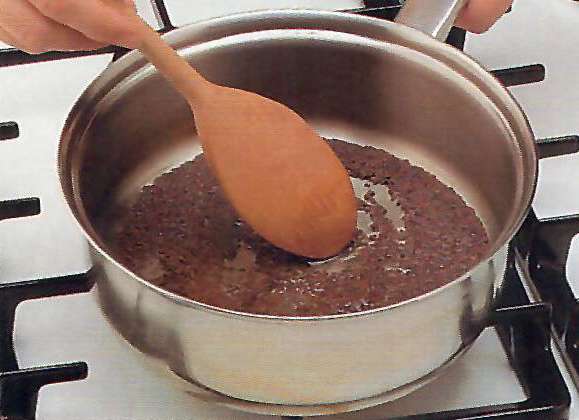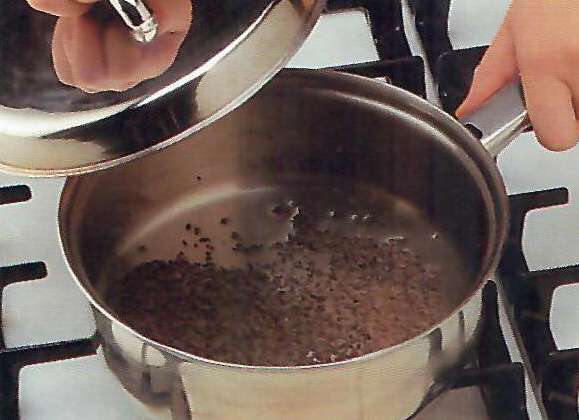Dry Frying Mustard Seeds
Mustard is one of the oldest spices known to man and has been cultivated as a crop for thousands of years. Both white (alba) and black (nigra) mustard seeds are indigenous to the Mediterranean region, while brown mustard seeds (juncea) are native to India.
The word mustard comes from the Latin mustum or must, the newly pressed grape juice that Romans mixed with the ground seeds to make what was aptly described as mustum ardens (the burning paste).
In Asia, the mustard plant is valued as much for its dark green leaves, which are called mustard greens and are a popular vegetable, as for its seeds. Mustard powders and pastes are not as widely used as they are in Europe or America.

Aroma and flavour
Mustard seeds have no aroma in their raw state. When they are roasted, however, they develop a rich, nutty small. Mustard's famous hot taste comes from an enzyme in the seeds, which is only activated when they are crushed and mixed with warm water. Brown mustard seeds, which have largely replaced the black seeds, are not as intensely pungent. White mustard seeds, which are actually a pale honey colour, are slightly larger than the other two varieties and a little milder.
Culinary uses
Throughout Asia, mustard seeds are used for pickling and seasoning. The whole seeds are often used in vegetable and dhal dishes, especially in countries such as Malaysia.
Preparation and cooking techniques
Mustard seeds are frequently roasted or fried before being used to bring out their flavour. A southern Indian technique involves spooning the seeds into hot ghee or oil, with a few curry leaves for extra flavour. A lid is placed over the pan to contain the seeds, which soon begin to splutter and pop. The seeds and oil are then poured, still sizzling, on to hot vegetable dishes, soups, stews or dhal as a flavoursome topping. Mustard oil is occasionally used for frying the seeds.
Mustard powder is used as a condiment. When it is mixed with warm water, milk or beer, a chemical reaction begins which allows the mustard to achieve its maximum potency. It takes about 15 minutes for the full flavour to develop. Boiling water or vinegar would inhibit the action of the enzyme responsible for the process, so should not be used.
Storage
Mustard seeds keep well. Store them in an airtight jar in a cool place.
Dry frying mustard seeds
Mustard seeds have almost no smell until they are heated, so before adding them to dishes, they should be dry-fried to heighten their aroma.
 |  |
- Heat a little sunflower oil in a deep, wide pan. Add the seeds and shake the pan over the heat, stirring occasionally, until they start to change colour.
- Have a pan lid ready to prevent the mustard seeds from popping out of the pan.